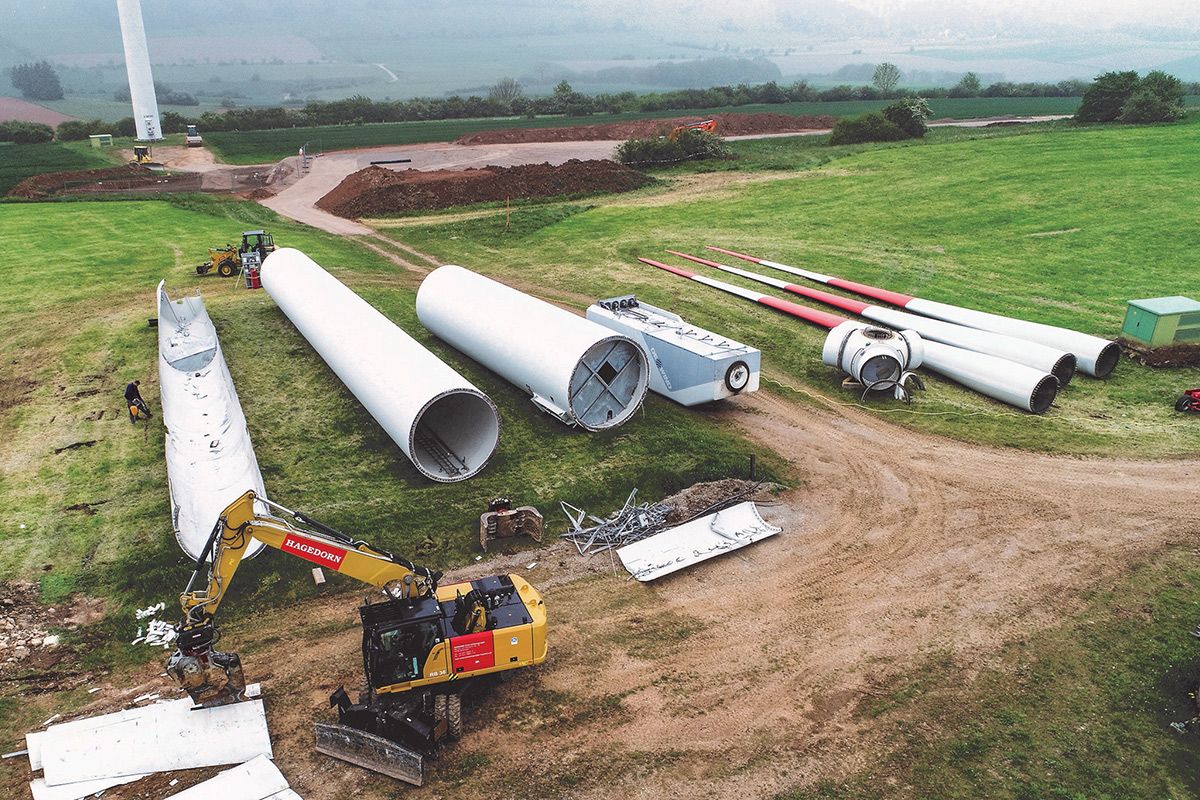What happens when wind turbines get old? New Industry Guidance Document for dismantling and decommissioning

WindEurope’s End-of-Life Issues and Strategies Seminar (EoLIS 2020) explored what happens when wind turbines reach the end of their operational life. Industry experts discussed the latest trends and developments in repowering, lifetime extension, decommissioning and recycling. WindEurope presented a new Industry Guidance Document for the dismantling and decommissioning of onshore turbines.
34,000 wind turbines in Europe are now 15 years or older, representing 36 GW of capacity. Most of the ageing capacity is in Germany. Spain, France and Italy also have a lot. 9 of the 36 GW are 20-24 years old and around 1 GW are 25 years or older.
Wind turbines don’t turn forever. The operational lifetime of an onshore wind turbine is 20-25 years. WindEurope expects the repowering of ageing wind farms to be a major trend over the next decade. To date Europe has successfully repowered at least 123 wind farms but repowering is still limited. This will change. In the next 10 years WindEurope expects over 20 GW to be repowered.
“Repowering is happening and will increase. It’s a great opportunity to get more energy from today’s wind farms. Repowering reduces the number of turbines by a third while tripling the electricity output. And it preserves the existing wind farm sites which often have the best wind conditions. Governments need repowering strategies that set the right framework and ensure efficient permitting procedures for repowering”, says WindEurope CEO Giles Dickson.
Besides repowering, lifetime extension is also an attractive option for wind farm operators. In sites where repowering is not an option, lifetime extension might be the best solution. WindEurope estimates that half of Europe’s existing wind farms will have their lifetime extended for 5-10 years when they reach 20 years of operation. If lifetime extension is not an option, wind turbines have to be fully decommissioned.
“WindEurope wants to help lead Europe’s efforts to create a circular economy. We want an international standard that defines how to decommission turbines. There’s no such standard today. With the new Industry Guidance Document on Dismantling and Decommissioning that we’ve presented today, we are further strengthening our position as a sustainable industry”, says Dickson.
The Guidance Document gives a comprehensive overview of the rules and regulations on decommissioning across Europe. And it defines best practice on how to decommission – with recommendations for dismantling, onsite cutting and separation and how best to load and transport material. It also covers health and safety requirements.
WindEurope submitted the Guidance to the International Electrotechnical Commission (IEC) TC88 as input to the ongoing amendment of 61400-28 CD Technical Specification which focuses on the end-of-life of wind turbines. We hope this will contribute to the creation of an international industry standard for sustainable decommissioning and dismantling of onshore wind turbines.
Wind turbines are a valuable source of resources which can be reused in the circular economy. 85-90% of a dismantled wind turbine are recycled today, including the towers, foundations, generators and gearboxes. Most of these materials are made up of concrete, steel and cast iron which are easy to recycle and for which there is an active circular economy market in Europe.
Recycling is more complex for the composite materials in the turbine blades which are used to make the blades lighter and more durable. Different methods exist for treating blade waste, with cement co-processing being the most widely used.



